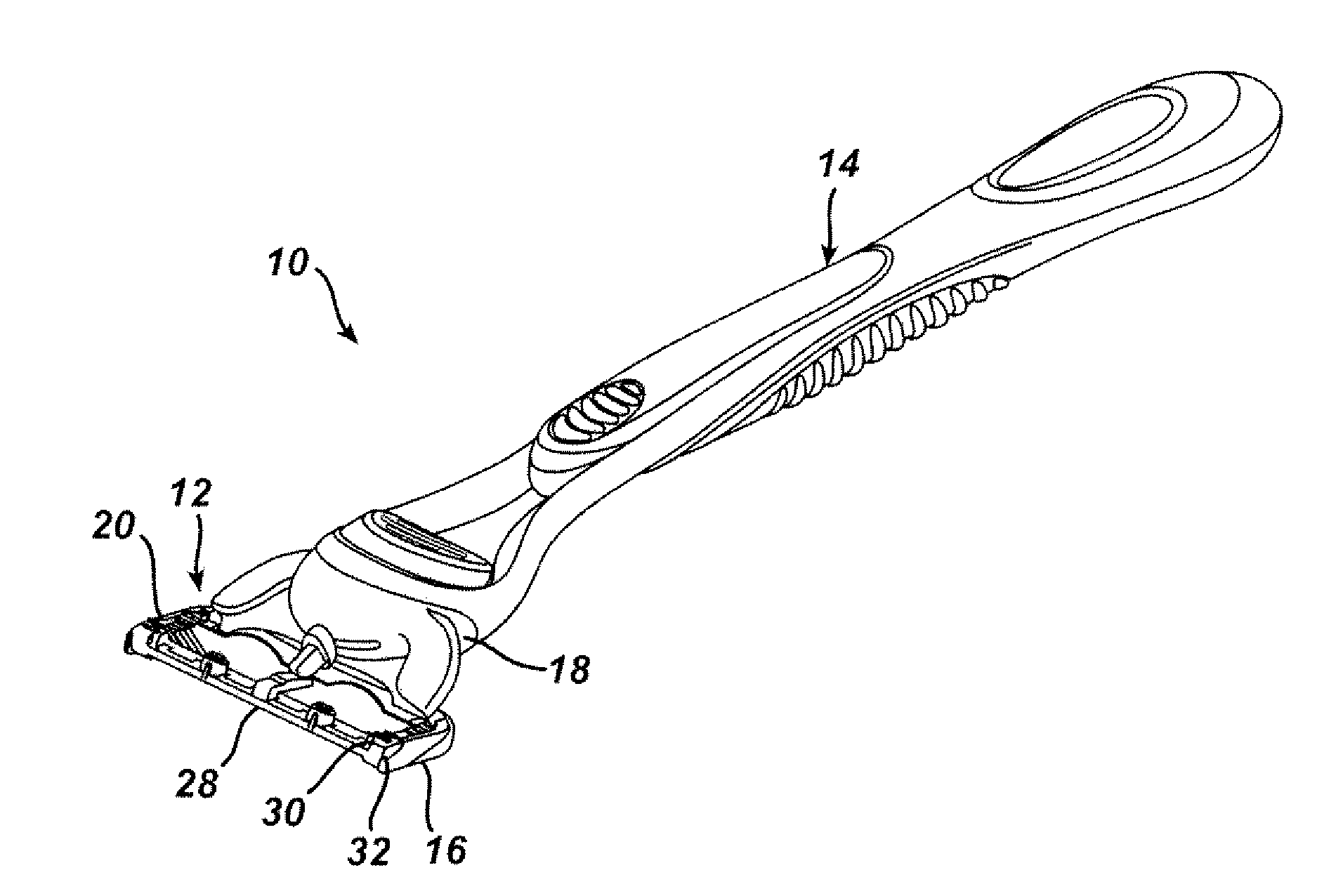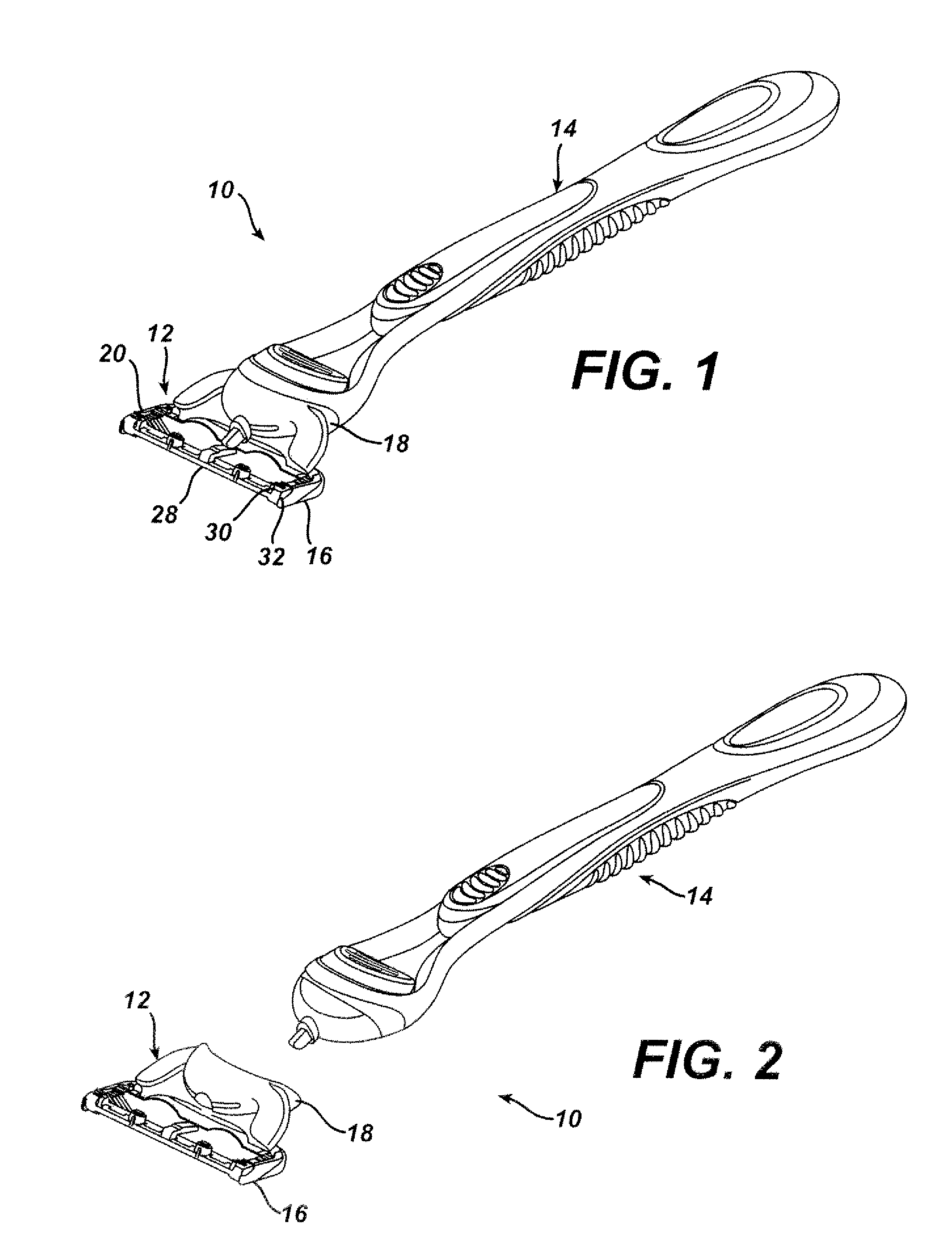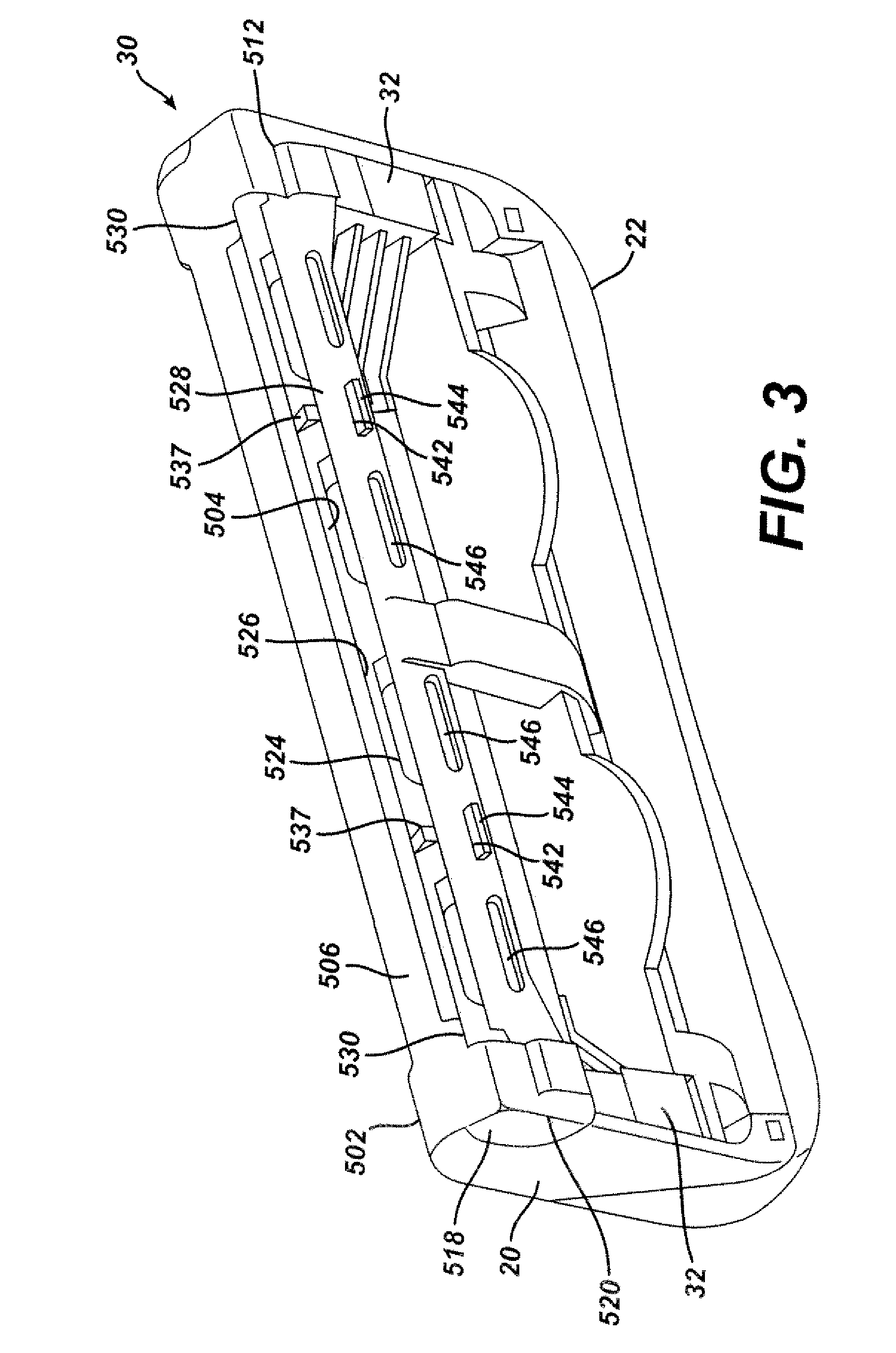Shaving Razors and Other Hair Cutting Assemblies
a technology of shaving razors and assemblies, which is applied in the direction of metal working devices, etc., can solve the problems of reducing the ability to trim, reducing maneuverability, and increasing drag forces, so as to avoid the cutting of the user's skin, facilitate the removal of shaving debris, and facilitate the trimming of sideburns and other longer hairs
- Summary
- Abstract
- Description
- Claims
- Application Information
AI Technical Summary
Benefits of technology
Problems solved by technology
Method used
Image
Examples
Embodiment Construction
[0027]Referring to FIGS. 1 and 2, shaving razor 10 includes disposable cartridge 12 and handle 14. Cartridge 12 includes a connecting member 18, which connects to handle 14, and a blade unit 16, which is pivotally connected to connecting member 18. Blade unit 16 includes plastic housing 20, primary guard 22 at the front of housing 20, cap 24 with lubricating strip 26 at the rear of housing 20, five elongated blades 28 between primary guard 22 and primary cap 24, and trimming blade assembly 30 attached to the rear of housing 20 by clips 32, which also retain blades 28 on housing 20.
[0028]Referring to FIG. 3, trimming blade assembly 30 is secured to the back of housing 20 and includes blade carrier 502 and trimming blade 504 mounted thereon. Blade carrier 502 is made of 0.011″ thick stainless steel sheet metal that has been cut and formed to provide structures for attaching to housing 20, supporting trimming blade 504, and defining a trimming guard and trimming cap surfaces.
[0029]Refe...
PUM
 Login to View More
Login to View More Abstract
Description
Claims
Application Information
 Login to View More
Login to View More - R&D
- Intellectual Property
- Life Sciences
- Materials
- Tech Scout
- Unparalleled Data Quality
- Higher Quality Content
- 60% Fewer Hallucinations
Browse by: Latest US Patents, China's latest patents, Technical Efficacy Thesaurus, Application Domain, Technology Topic, Popular Technical Reports.
© 2025 PatSnap. All rights reserved.Legal|Privacy policy|Modern Slavery Act Transparency Statement|Sitemap|About US| Contact US: help@patsnap.com



